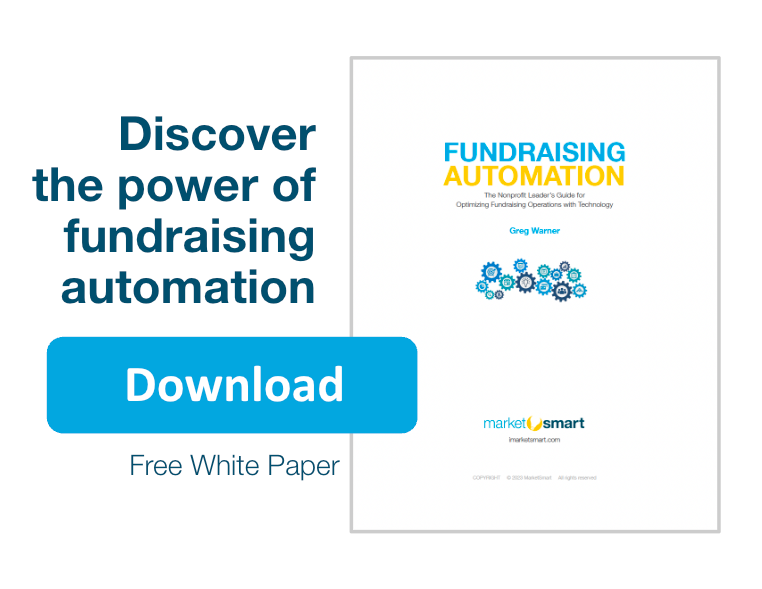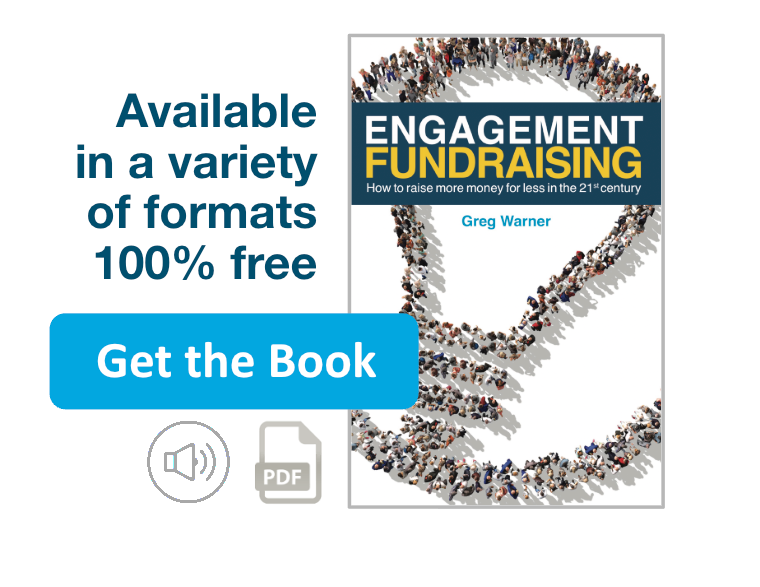SPOILER ALERT: You can’t afford not to automate your fundraising operations
In my previous post, I promised to examine whether or not you can afford to invest in automating your team’s more mundane tasks. So let’s jump in!
First, consider why major gifts fundraisers fire their employers
The best major gift fundraisers quit because they love to interact with people.
Stay with me on this.
Believe it or not, it’s hard to give money away. That’s why the Bill and Melinda Gates Foundation employs more than 1,600 people.
Major gifts fundraisers like to help people navigate the philanthropic giving decision-making process. They get a kick out of helping donors think carefully about their choices. They see themselves as facilitators, not solicitors.
And they absolutely love helping donors make an impact, especially if it’s through your organization. They cry tears of joy alongside benefactors as they partner to make a positive impact in the world.
That’s the bread and butter of major gifts officers’ work.
Here’s what fundraisers DON’T enjoy so much:
- Sitting in meetings
- Helping arrange events
- Feeling overworked, underappreciated, and undervalued
- Having more prospects on their caseload than they can possibly reach out to in a timely manner
- Making cold calls and getting no response instead of warm calls that lead to meaningful meetings
- Going on wild-goose chases thanks to false positives (pursuing apathetic prospects who aren’t truly qualified even though their wealth screening results say they are)
- Being pressed to solicit gifts from supporters who aren’t ready because they haven’t been cultivated properly (and there’s no time for cultivation because the major gifts officer is busy sitting in meetings or arranging events)
If you asked a random group of 100 major gifts fundraisers how they spend their time, what do you think they would say?
A study conducted by Ruffalo Noel Levitz in 2017 essentially did just that. The respondents were seasoned fundraisers and leaders, having spent 13 years in advancement, with nine of those in major and/or planned giving (on average). In general, the study found that fundraisers experience “significant pressure for their limited donor contact time, as well as frustration in finding good ways to focus on the right donors and amplify productivity.”
Here are some details:
- Fewer than ⅓ of the respondents believe wealth and prosperity ratings are highly effective.
- 86% used wealth ratings, but only 27% reported that wealth ratings were “quite effective or very effective for focusing on the right prospects.”
- Only 19% said that wealth ratings were “quite effective or very effective in helping to determine ask amounts.”
- Just 30% said that propensity ratings were “quite effective or very effective in predicting the likelihood for a prospective donor to make a major or planned gift.”
- The average size of their caseloads was 142, yet only 52% of their assigned prospects—71 supporters—received personal visits each year.
- Only 37% said the newly assigned prospects placed in their caseloads were truly qualified to be a major or planned gift donor.
- 92% said they stay engaged with donors and prospects by sending personal emails manually yet over half (55%) said they didn’t spend enough time on solicitation and 42% said they didn’t spend enough time on qualification.
- 50% said that they primarily have to qualify donors with face-to-face visits, while at the same time, 52% said they don’t have enough time to get it all done.
- Overall, they reported experiencing “significant frustration with the time spent setting up and completing qualification visits that did not ultimately lead to gifts.”
This is the cause of high turnover.
It’s a high-stress position with high stakes. But sadly, the support systems that are meant to make their jobs doable don’t deliver the goods. That’s why frustration and burnout runs rampant in fundraising shops around the globe.
How does high turnover among major gifts officers affect your nonprofit?
In short: you lose.
You lose time and money hiring and training new ones.
You lose details about high value supporters that gift officers know and remember.
You lose opportunities with donors who had forged relationships with the fundraiser who just quit.
You lose donors who were ready to give, but by the time the new gift officer gets in touch with them, their situation has changed and they’re no longer interested, or they already supported a competitor with a similar mission.
You also lose quality. If you have a team of major gifts officers and your best one leaves, that means you have to rely on the ones who aren’t quite as good—the ones you were hoping to let go once you found someone better. Now you have to replace the all-star who left, and the subpar ones suddenly become temporarily indispensable.

That’s a lot of losing
I don’t know about you but I don’t like to lose that much. So why not use marketing automation to plug a lot of those holes?
Marketing automation saves time and money.
It keeps your staff happy so you don’t have to spend resources on hiring and training new people.
It ensures continuity.
It maintains relationships with your best supporters, volunteers, advocates and donors.
It helps you conduct donor discovery and cultivation efforts at scale.
Plus, it supports your desire to deliver a quality, VIP experience to lots of well-meaning people who believe in your cause
And most importantly, it can help you maximize the amazing staff you already have in place. In fact, in my next post, I’ll explore whether or not you really need more gift officers to raise more money.
Just click here to go to that post now.
Related Posts:
>> Do you really need MORE gift officers to raise more money?
>> Top 10 ways marketing automation helps nonprofits raise more money for less
>> How to put marketing automation to work for your nonprofit’s fundraising




